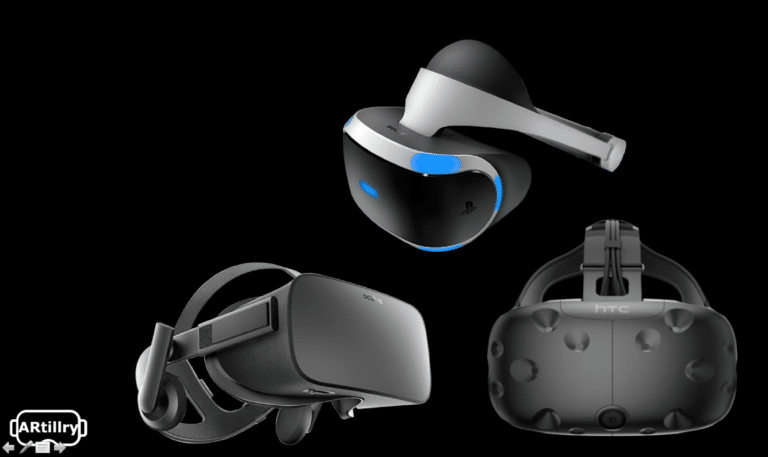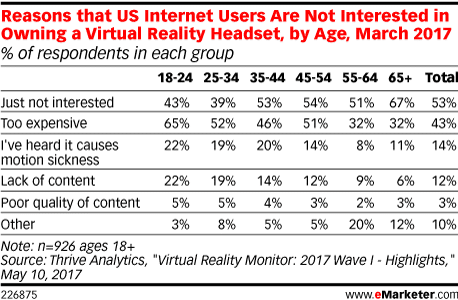
VR headset sales are showing strong signs of growth. Though sales dipped quarter-over-quarter in Q1, IDC reports that year-over-year sales grew 69 percent to 2.24 million units.
With hardware sales, year-over-year comparisons provide a more accurate picture of growth. Quarter-over-quarter figures are skewed by seasonal trends — in this case the strong Q4 holiday season.
Not surprisingly, Samsung leads with a 21.5 percent market share, followed by Sony and HTC. This is telling, though it’s “apples to oranges” given different tiers of VR hardware (see our segmentation).
Another sign of industry health is Sony’s announcement that it just passed 1 million units in cumulative sales. This makes it the leader among tier 1 headsets — not surprising due to the PS4’s installed base.

Reaching the Next Step
This all begs the question of how to get to the next inflection point in sales that brings VR closer to the mainstream. As we’ve examined, cumulative sales are around 17 million placing VR still far from ubiquity.
There will be lots of natural technological progression that get us to that point, such as cultural acclimation/adoption and Moore’s Law (Read: lower prices), as echoed by Unity’s John Riccitielo.
But there are also factors that the industry will need to actively work on to break through points of consumer resistance. There, it’s useful to look at the reasons for that early resistance.
Thrive analytics did just that recently. In partnership with ARtillry, the firm fielded a consumer survey on VR adoption and sentiment (stay tuned for a longer Intelligence Briefing that unpacks the findings).
As for the question of why non-adopters weren’t interested, the biggest reason was unsurprisingly cost, which again will come down in natural cycles. And content libraries will also improve.
But it’s also evident from these results that the industry has some PR and education to accomplish. That will particularly address concerns such as motion sickness, though it’s also a technically-rooted issue.
See the rest of the data below and stay tuned for more.

